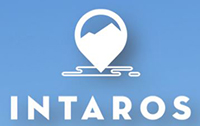The overall integrated Arctic Observation System (iAOS) is comprised of observing infrastructures, data systems managing the data, and platforms for integration, service development and deployment. The iAOS Cloud Platform developed in INTAROS utilizes data collections from existing and new observing systems made available through online data repositories. To combine data scattered in space and time, tools rely on geostatistical methods and algorithms to take into account the spatiotemporal characteristics of the data.
This deliverable describes the first version of the Geostatistical Library for iAOS named RIntaros. This library was developed to meet the needs of a case study on generating ocean temperature and salinity fields for validation of climate model projections. The case study is based on requirements from Task 6.3 (“Ice-ocean statistics for decisions support and risk assessment”) for comparing output from the Norwegian Climate Prediction Model (NorCPM) with in situ observations. These requirements have been refined in collaboration with the Norwegian Institute of Marine Research (IMR), which hosts large amounts of oceanographic data from high latitude areas such as the Barents and Greenland seas, Fram Strait and north of Svalbard. The resulting specification of a data interpolation application provided the basis for the RIntaros library.
RIntaros relies on the RGeostats R package (© MINES ParisTech - ARMINES), which is freely available from http://cg.ensmp.fr/rgeostats. RGeostats and RIntaros packages are freely available from https://anaconda.org/Terradue/r-rgeostats and https://anaconda.org/Terradue/r-rintaros, as a Linux package for use on cloud computing environment such as the iAOS Cloud Platform.
Additionally to all Geostatistical features coming with RGeostats package, the first version of the Geostatistical Library RIntaros offers high level features dedicated to CTD data (validation, aggregation, global or local statistics, variography, estimation of 2D or 3D gridded field, 2D or 3D scatter or gridded data visualization).
Using RIntaros we developed a cloud application for interpolating scattered in situ observations of ocean temperature and salinity to gridded fields suitable for comparison with model projections. The application (EWF-IMR-ESTIM) was deployed in the iAOS cloud platform and made available through a standard Web Processing Service (WPS) interface. This enables portals and other software clients to execute it and obtain its results as a set of files. As a proof of concept, the application was then called from the Geobrowser portal component of the iAOS cloud platform operated by Terradue, and the resulting field visualised in this portal.
